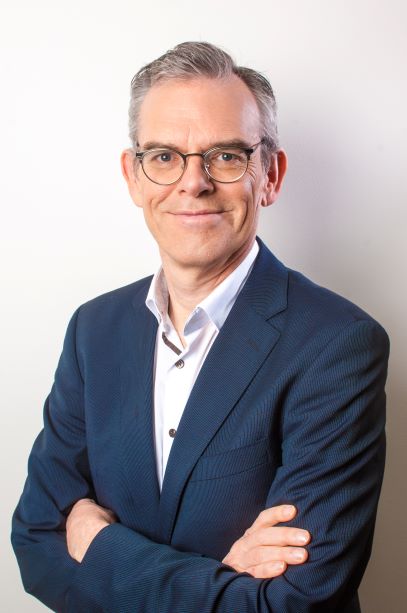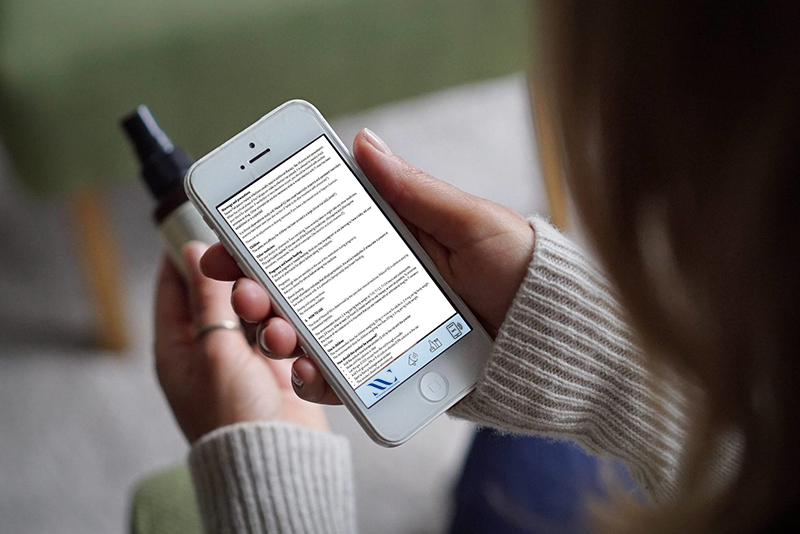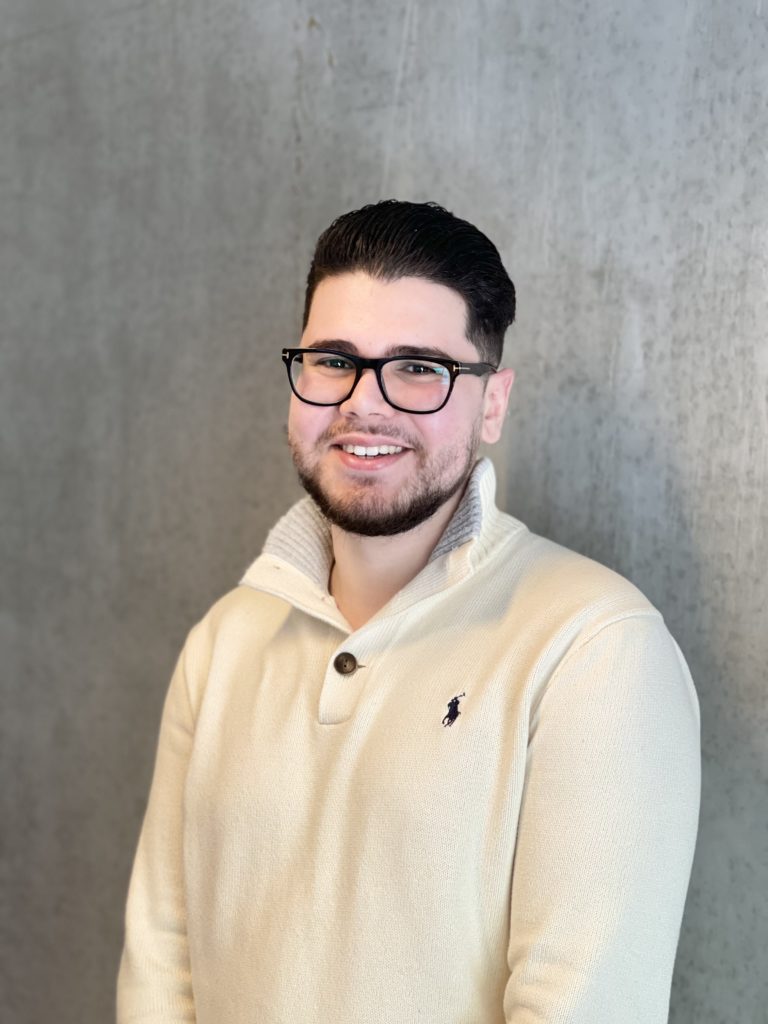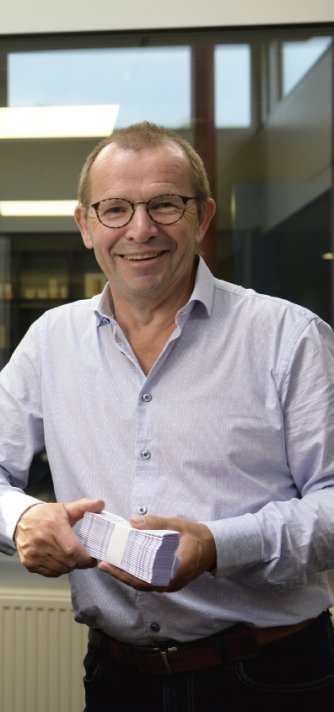Interview with Michaël Nieuwesteeg (NVC) about the future of medication packaging
Medication packaging with pictograms and digital leaflets to combat environmental pollution
The pharmaceutical industry is on the eve of a large breakthrough in the packaging of medication and medical devices. Behind the scenes and at the initiative of the NVC Netherlands Packaging Centre, various companies from the packaging sector decided to join forces. Being a packaging specialist, De Budelse became involved in this project. Michaël Nieuwesteeg of the NVC explains why it is so important to tackle the current packaging together and to determine innovative alternatives for the purpose of counteracting waste and environmental pollution.
The NVC’s motto is Sharing the future in packaging. ‘The PUMA project is a powerful example of this shared responsibility to, as a corporate packaging community, put an end to emptied packaging as an environmental issue worldwide,’ Michaël Nieuwesteeg proceeds. ‘A project closely connected to this is the NVC innovation project Pharmaceutical Packaging Innovation, where NVC member companies investigate the possibilities of new and innovative packaging of medication and medical devices, among other things.’
Counteracting waste
What information should be printed on packaging or must be unlocked via packaging, so that we can improve healthcare? ‘According to European guidelines it is mandatory for the Patient Information Leaflet (PIL) to be supplied in the language of the country,’ Michaël Nieuwesteeg continues. ‘Patients must be able to read how to use their medication in their own language. Something that initially appears quite handy, but which at the same time results in numerous trees being felled for the purpose of printing huge quantities of patient and medication information that could easily fill libraries. We obviously wish to counteract that waste and it is hugely inspiring to see that innovators such as De Budelse wish to participate in this.’

Interactive QR code or NFC chip
The addition of an interactive QR code or NFC chip is one of the spearheads of De Budelse. In view of the potential for both the environment and an improved healthcare, we fully support De Budelse regarding their developments. At the same time, there is a connection with projects we initiate in collaboration with other members. Thanks to the joining of forces, we are also talking to legislative bodies throughout the world,’ Michaël Nieuwesteeg continues. ‘In Europe that would be the European Medicines Agency (EMA) in Amsterdam. This is important, as not only the technology but also the social and legislative preconditions must be watertight. Such a digital addition being hacked doesn’t bear thinking about. Imagine scanning a code and ending up at a porn site or being shown the wrong instruction video. In this respect, pharmaceutical companies will do everything they can to limit any risks to an absolute minimum; for this they require a good legislation that encourages innovations and moderates any associated risks, so to speak. Or to say it more bluntly; they are scared to death of being faced with a claim for damages.’
“verspilling willen we uiteraard tegengaan en het is geweldig inspirerend te zien
dat innovators als De Budelse hier ook in willen mee schakelen”
Unambiguous information
In order to limit risks, the unambiguity of the information on packaging is crucial. According to Michaël Nieuwesteeg, easier to understand pictograms will play an important role here in the future.
In this regard, the NVC also collaborates with Japanese companies and institutions, if only to experience what it is like if you really cannot read a text at all. Furthermore, where ageing population is concerned, Japan is leading, with all its additional requirements regarding the packaging and information of medication. ‘I am pleased – and even vicariously proud – that NVC member De Budelse is doing pioneering work in this project where the digital printing of codes to unlock information is concerned,’ Michaël Nieuwesteeg states. ‘Readability, findability and uniqueness of codes is of paramount importance here. It is the only way to provide patients with relevant information and simultaneously improve healthcare.’

Collect Control
There is an interesting crossover between the problems of the pharmaceutical industry and those of the environment. ‘Within the PUMA project, NVC members are working on ending packaging as a worldwide environmental issue,’ Michaël Nieuwesteeg explains in more detail. ‘We are not working on putting an end to packaging. But, to prevent packaging from becoming an environmental issue, it is important to know where all the emptied packaging ends up. Currently, 320,000 products are packed per second worldwide. The same quantity is added each second as emptied packaging. The trick is to control that flow, or rather, it’s about collecting (Collect) and using the correct Backend process (Control).’
In concrete terms, this means that we are going to start an international study, which will include the coding of medication packaging and the setting up of a backend process, informing us of their whereabouts. In this case the “consumer” is the patient. Due to its expertise, De Budelse plays an important role in this. The combination of unique coding, an understandable symbol and the correct QR code or NFC chip for access to online information ensures that patients know how to use their medication and devices and how to dispose of the packaging used in a responsible manner.’
“with a digital insert you can use an app to create a personal profile,
With an eye toward personalized care, this is a big step forward.”

Kijksluiter
Yousri Acem studies Pharmaceutical Business Administration at the University of Applied Sciences in Utrecht. As a thesis subject, he investigates the added value and possibilities of digital leaflets. Within the context of his study he is currently fulfilling a work placement at De Budelse. ‘The “KIJKsluiter” is a great example of digitisation,’ Michaël Nieuwesteeg explains. ‘The pharmacist places a code on a medication package. If you scan it using your telephone, you are shown a video with a step-by-step explanation on how to take the medication or use the device. Such a video would have to be unlocked first. The only option at your disposal would be the packaging.’
Use of electronic patient information
The pharmaceutical industry is a government-regulated industry, where the EMA devotes itself to people’s health by evaluating and supervising medication. An important task here is providing the correct information to healthcare workers and patients. ‘The EMA gives its approval to the use of electronic patient information (ePI),’ Yousri Acem prefaces his research. ‘A great many parties are involved in this. In my research, I assess the need and I would also like to know whether a QR code or NFC chip is the preferred method to unlock medication or patient information via mobile scanning.’
Advantages digital leaflet
In his research, Yousri Acem focuses on the ease of use of the ePI for the patient, among other things. ‘A digital leaflet would be far more useful because of the presence of a search function, the translation into your preferred language and the option of having the text as a sound clip. The latter being important to blind and partially-sighted people as you want to make sure that the information is available to everyone.’ ePI also has many advantages for pharmaceutical companies. ‘Normally, adapting a paper leaflet is a very time-consuming process. Let alone the huge stocks of some leaflets. When using a digital leaflet, this disadvantage no longer applies.’
Personalised care
According to Harry Mennen, the digital leaflet offers patients another big advantage by combining the effects and side effects of various medicines. ‘If patients use multiple medicines, they will receive a leaflet with each medicine in which the effects and side effects are explained. You cannot achieve this combination manually. For example, can you combine a blood thinner for your heart issues with a painkiller for your headache? In the case of a digital leaflet, you can use an app to create a personal profile, combine effects and side effects with each other and add your medical file to gain a better insight into what you are taking. In view of personalised care this is a huge step forward.’
Qualitative study
In order to adequately map needs and preferences, Yousri Acem conducts qualitative studies at stakeholders, such as the EMA, the Medicines Evaluation Board (CGB-MEB), pharmaceutical companies and the umbrella organisation of pharmacies, patient organisations and health insurers.
‘It appears, after the first interviews, that pharmaceutical companies and the Netherlands Patients Federation agree on the fact that electronic product information has a great future in store,’ Yousri Acem summarises his findings. ‘There is still much unclarity regarding the final form and method of implementation. In short; a lot more questions to ask and plenty of food for thought.’

